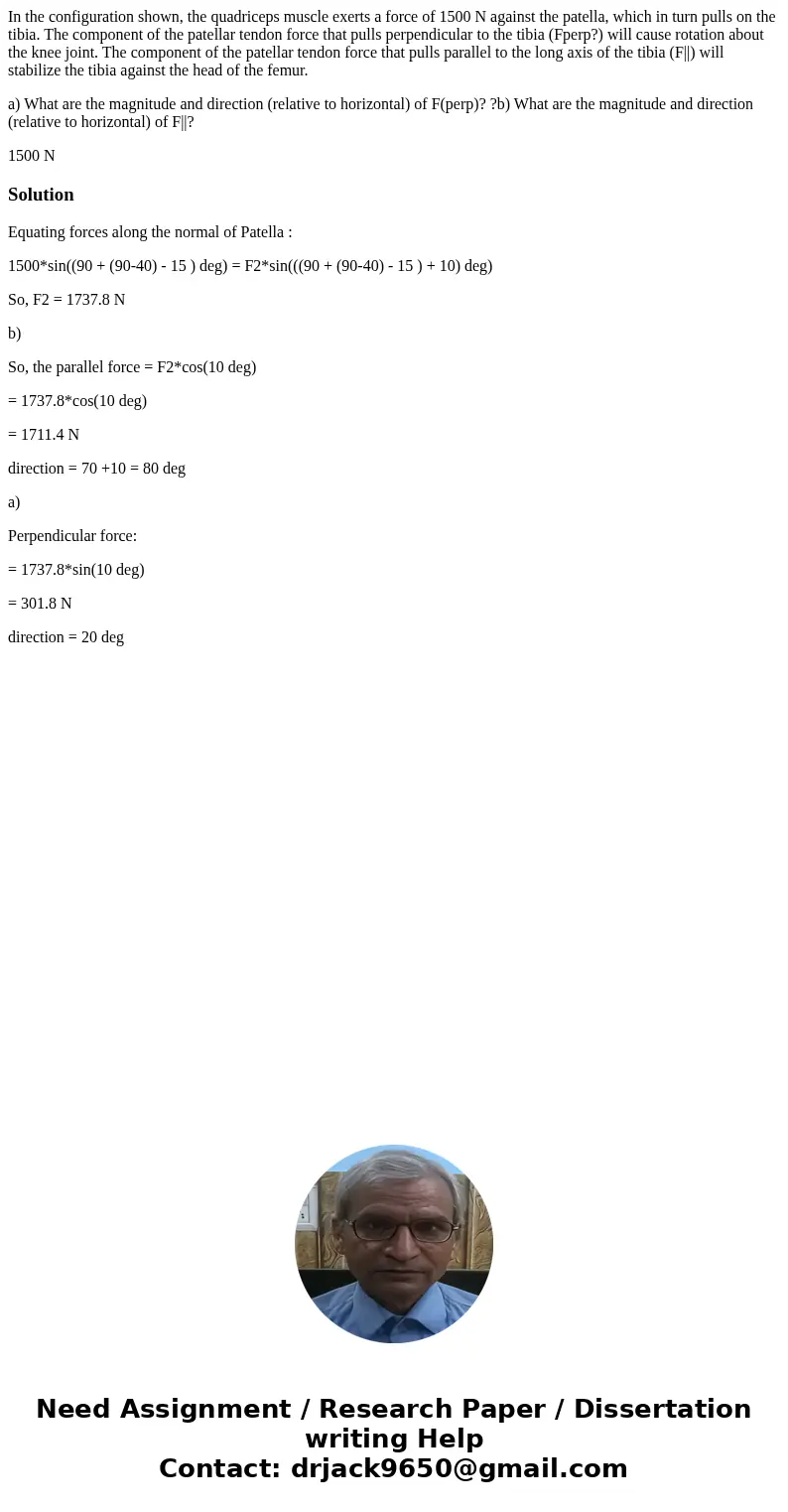In the configuration shown the quadriceps muscle exerts a fo
In the configuration shown, the quadriceps muscle exerts a force of 1500 N against the patella, which in turn pulls on the tibia. The component of the patellar tendon force that pulls perpendicular to the tibia (Fperp?) will cause rotation about the knee joint. The component of the patellar tendon force that pulls parallel to the long axis of the tibia (F||) will stabilize the tibia against the head of the femur.
a) What are the magnitude and direction (relative to horizontal) of F(perp)? ?b) What are the magnitude and direction (relative to horizontal) of F||?
1500 NSolution
Equating forces along the normal of Patella :
1500*sin((90 + (90-40) - 15 ) deg) = F2*sin(((90 + (90-40) - 15 ) + 10) deg)
So, F2 = 1737.8 N
b)
So, the parallel force = F2*cos(10 deg)
= 1737.8*cos(10 deg)
= 1711.4 N
direction = 70 +10 = 80 deg
a)
Perpendicular force:
= 1737.8*sin(10 deg)
= 301.8 N
direction = 20 deg

 Homework Sourse
Homework Sourse